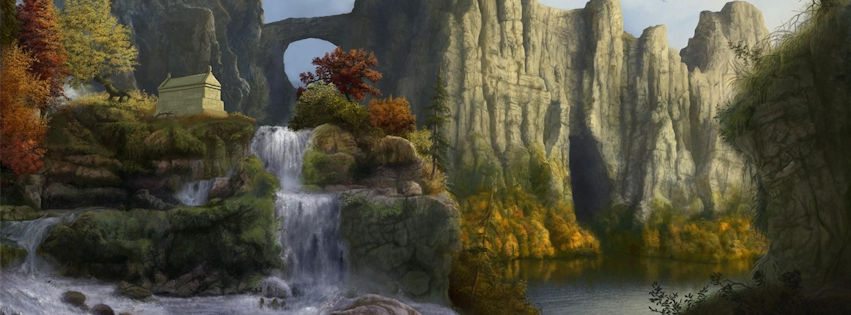Barrileaux Observation Post
Located on the extreme northern slopes of the Frostheim Mountain Range, Barrileaux Post is the northern-most point under the jurisdiction (not sovereignty) of the Principality of Zoluren. The station is located on a high plateau some 9,400 feet above sea level, making it the highest continually manned, human-centric point in Kermoria.
Barrileaux was constructed from 191-193 at great expense to the Crown of Zoluren, and is one of the premier places on Kermoria for astronomical, atmospheric, and astrological research and observation.
Due to the extreme latitude, the station is the only continually-inhabited place on Kermoria from which the Sun is continuously visible for six months; it is then continuously dark for the next six months, with approximately two days of averaged dark and light, twilight, namely the equinoxes. These are, in observational terms, called one extremely long "day" and one equally long "night". During the six-month "day", the angle of elevation of the Sun above the horizon varies incrementally. The sun reaches a rising position through the equinox in the third month, and then it is apparent highest in the sixth month, and then sets on the equinox of the ninth month.
During the six-month-long polar night, air temperatures can reach so low that exposed human flesh freezes within seconds, and even cold-acclimated or resistant creatures tend to shun the area. However, due to this extreme cold, it provides an extremely dry atmosphere which makes the station an excellent site for astronomical observations.
During the 'day' months, the telescope and research station are manned by as many as seventy five researchers; however, as 'night' sets in, many retreat south towards Skywind Observatory, making the typical staffing during the night-time months roughly 25.
Barrileaux was constructed from 191-193 at great expense to the Crown of Zoluren, and is one of the premier places on Kermoria for astronomical, atmospheric, and astrological research and observation.
Due to the extreme latitude, the station is the only continually-inhabited place on Kermoria from which the Sun is continuously visible for six months; it is then continuously dark for the next six months, with approximately two days of averaged dark and light, twilight, namely the equinoxes. These are, in observational terms, called one extremely long "day" and one equally long "night". During the six-month "day", the angle of elevation of the Sun above the horizon varies incrementally. The sun reaches a rising position through the equinox in the third month, and then it is apparent highest in the sixth month, and then sets on the equinox of the ninth month.
During the six-month-long polar night, air temperatures can reach so low that exposed human flesh freezes within seconds, and even cold-acclimated or resistant creatures tend to shun the area. However, due to this extreme cold, it provides an extremely dry atmosphere which makes the station an excellent site for astronomical observations.
During the 'day' months, the telescope and research station are manned by as many as seventy five researchers; however, as 'night' sets in, many retreat south towards Skywind Observatory, making the typical staffing during the night-time months roughly 25.
Founding Date
193AV
Type
Observatory / Telescope
Parent Location
Owning Organization



Comments